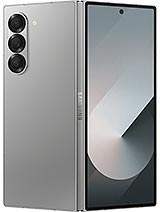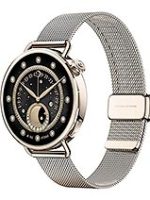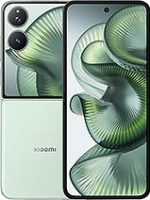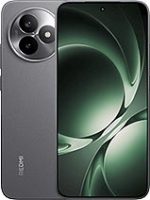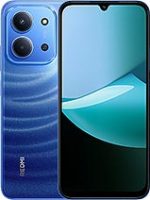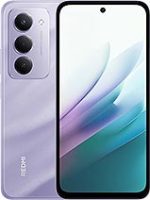Samsung Galaxy Z Fold 6 vs iPhone 15 Pro Max: The Ultimate Flex
Galaxy Z Fold 6 vs iPhone 15 Pro Max. Consequently, the choice is no longer simple. Do you choose the revolutionary foldable, the Samsung Galaxy Z Fold 6? Or do you pick the refined classic, the iPhone 15 Pro Max? This isn’t just a specs battle. Moreover, it’s a decision between two different philosophies of a mobile device. Let’s break down this epic clash.
Design & Display: A Tale of Two Forms
Firstly, the designs are worlds apart. The iPhone 15 Pro Max is the peak of traditional smartphone design. It features a titanium frame. This makes it lighter and more premium. Furthermore, its 6.7-inch Super Retina XDR display is stunningly bright. The experience is familiar and exceptionally polished.
Conversely, the Samsung Galaxy Z Fold 6 is a multitasking marvel. It transforms from a tall phone into a small tablet. Its cover screen is perfect for quick tasks. Then, you unfold it to reveal a spacious 7.6-inch main display. Therefore, it offers unparalleled screen real estate. This is its biggest advantage.
Display Advantage: Samsung Galaxy Z Fold 6
The Z Fold 6 provides a transformative screen experience. You get a tablet in your pocket. It is ideal for reading, drawing, and multitasking.
Performance & Software: Power Meets Possibility
Both phones are incredibly powerful. The iPhone 15 Pro Max uses the A17 Pro chip. This chip delivers blistering speed. It handles every task with ease. Additionally, iOS 18 offers a seamless and secure ecosystem. The software is intuitive and reliable.
Meanwhile, the Z Fold 6 is expected to run on the Snapdragon 8 Gen 3 chip. It will be an absolute performance beast. However, its real power lies in its software. Multi-active windows are a game-changer. You can run three apps side-by-side. Consequently, your productivity soars.
Software Advantage: Samsung Galaxy Z Fold 6
The Z Fold 6’s foldable-optimized Android provides a PC-like multitasking experience. It fundamentally changes how you use your phone for work.
Camera System: Versatility Versus Consistency
The camera comparison is fascinating. The iPhone 15 Pro Max has a legendary camera system. Its photos and videos are consistently excellent. The 5x optical zoom is particularly impressive. Moreover, its video recording is industry-leading. You get reliable, top-tier results every time.
The Samsung Z Fold 6 will have a very capable triple-camera array. However, its camera advantage is more about versatility. You can use the large main display as a huge viewfinder. This makes framing shots incredibly easy. Furthermore, Flex mode allows for hands-free video calls.
Camera Advantage: iPhone 15 Pro Max
The iPhone 15 Pro Max offers more consistent, higher-quality photos and superior video recording. It remains the gold standard for mobile creators.
Battery Life & Pricing: The Daily Grind
Battery life is crucial. The iPhone 15 Pro Max is a champion here. It easily delivers a full day of heavy use. You can rely on it without worry.
The Z Fold 6 will likely have a large dual-battery. However, powering a tablet screen demands more energy. Therefore, its battery life may be solid but not class-leading.
Now, let’s talk price. The iPhone 15 Pro Max starts at $1,199. It is a premium price for a premium product. Conversely, the Z Fold 6 is a premium luxury. It is expected to start around $1,799. This is its biggest hurdle.
Battery Advantage: iPhone 15 Pro Max
The iPhone provides more reliable all-day battery life, making it a safer bet for power users who are always on the go.
The Final Decision: Which Phone is Your Perfect Match?
So, which flagship should you buy? Your lifestyle holds the answer.
Choose the Samsung Galaxy Z Fold 6 if: You are a power user. You crave maximum productivity. Furthermore, you consume a lot of media. You want a device that is also a tablet. You are an early adopter who loves innovation.
Choose the iPhone 15 Pro Max if: You want the most polished experience. You prioritize a world-class camera. Moreover, you value all-day battery life. You are invested in the Apple ecosystem. You prefer a proven and reliable flagship.
Ultimately, the Z Fold 6 is a glimpse into the future. Meanwhile, the iPhone 15 Pro Max is the pinnacle of the present. Choose based on what you need today.
Want to explore more tech comparisons and reviews? Check out our full catalog of articles for the latest insights: Read more at TechieDeck
is the Galaxy Z Fold 6 worth it over an iPhone”, “foldable phone durability test”, “best phone for multitasking 2024”, “Samsung Z Fold 6 camera vs iPhone 15 Pro Max”.
NETWORK
| Technology | GSM / CDMA / HSPA / EVDO / LTE / 5G GSM / CDMA / HSPA / EVDO / LTE / 5G |
| 2G bands | GSM 850 / 900 / 1800 / 1900 GSM 850 / 900 / 1800 / 1900 |
| 3G bands | HSDPA 850 / 900 / 1700(AWS) / 1900 / 2100 HSDPA 850 / 900 / 1700(AWS) / 1900 / 2100 |
| 4G bands | 1, 2, 3, 4, 5, 7, 8, 12, 13, 17, 18, 19, 20, 25, 26, 28, 32, 38, 39, 40, 41, 66 - International 1, 2, 3, 4, 5, 7, 8, 12, 13, 17, 18, 19, 20, 25, 26, 28, 30, 32, 34, 38, 39, 40, 41, 42, 46, 48, 53, 66 - A3106 |
| 5G bands | 1, 2, 3, 5, 7, 8, 12, 20, 25, 26, 28, 38, 40, 41, 66, 75, 77, 78 SA/NSA/Sub6 - International 1, 2, 3, 5, 7, 8, 12, 20, 25, 26, 28, 30, 38, 40, 41, 48, 53, 66, 70, 77, 78, 79 SA/NSA/Sub6 - A3106 |
| Speed | HSPA, LTE (CA), 5G HSPA, LTE, 5G, EV-DO Rev.A 3.1 Mbps |
LAUNCH
| Announced | 2024, July 10 2023, September 12 |
| Status | Available Available |
| Released | Available. Released 2024, July 24 Available. Released 2023, September 22 |
BODY
| Dimensions | Unfolded: 153.5 x 132.6 x 5.6 mmFolded: 153.5 x 68.1 x 12.1 mm 159.9 x 76.7 x 8.3 mm (6.30 x 3.02 x 0.33 in) |
| Weight | 239 g (8.43 oz) 221 g (7.80 oz) |
| Build |
Glass front (Gorilla Glass Victus 2) (folded), plastic front (unfolded), glass back (Gorilla Glass Victus 2), aluminum frame IP48 dust and water resistant (dust > 1mm; immersible up to 1.5m for 30 min) Armor aluminum frame Stylus support Glass front, glass back, titanium frame (grade 5) IP68 dust tight and water resistant (immersible up to 6m for 30 min)Apple Pay (Visa, MasterCard, AMEX certified) |
| SIM SIM (Subscriber Identity Module) is a small card that contains mobile network subscriber's account information. This allows the phone using the card to attach to a mobile network. The SIM card is most commonly associated with GSM and UMTS mobile networks. Moving a SIM card from one phone to another allows a subscriber to switch mobile phones without having to contact their mobile network carrier. SIM cards can also be used by a phone to store limited amounts of data, such as phone numbers and text messages. | · Nano-SIM + eSIM· eSIM + eSIM· Nano-SIM + Nano-SIM (SM-F9560) Nano-SIM + eSIM + eSIM (max 2 at a time; International)eSIM + eSIM (8 or more, max 2 at a time; USA)Nano-SIM + Nano-SIM (China) |
DISPLAY
| Type Design Type called form factor refers to a mobile phone's size, shape, and style as well as the layout and position of major components of phone. There are three major form factors seen in mobile phones => bar phones, folding phones and sliding phones. | Foldable Dynamic LTPO AMOLED 2X, 120Hz, HDR10+, 2600 nits (peak) LTPO Super Retina XDR OLED, 120Hz, HDR10, Dolby Vision, 1000 nits (typ), 2000 nits (HBM) |
| Size | 7.6 inches, 185.2 cm2 (~91.0% screen-to-body ratio) 6.7 inches, 110.2 cm2 (~89.8% screen-to-body ratio) |
| Resolution | 1856 x 2160 pixels (~374 ppi density) 1290 x 2796 pixels, 19.5:9 ratio (~460 ppi density) |
| Protection | Ceramic Shield glass |
PLATFORM
| OS | Android 14, up to 7 major Android upgrades, One UI 6.1.1 iOS 17, upgradable to iOS 26 |
| Chipset Chipset is a group of integrated circuits designed to perform one or a more dedicated functions, often with real time computing constraints, Popular smartphones are equipped with more advanced embedded chipsets that can do many different tasks depending on their programming. | Qualcomm SM8650-AC Snapdragon 8 Gen 3 (4 nm) Apple A17 Pro (3 nm) |
| CPU CPU (Central Processing Unit) mostly known as processors, CPU processes instructions in order to carry out certain functions that make your device operate properly. Processors are often described as the brain of computers, smartphones and tablets, Smartphones and tablets rely on processors to carry out their every task, Processors are an incredibly important factor in selecting any type of computing device, including your smartphone. | 8-core (1x3.39GHz Cortex-X4 & 3x3.1GHz Cortex-A720 & 2x2.9GHz Cortex-A720 & 2x2.2GHz Cortex-A520) Hexa-core (2x3.78 GHz + 4x2.11 GHz) |
| GPU GPU (Graphics Processing Unit) is a single-chip processor designed to rapidly manipulate and alter memory to accelerate the creation of images in a frame buffer intended for output to a display, This includes things such as lighting effects, object transformations, and 3D motion. | Adreno 750 (1 GHz) Apple GPU (6-core graphics) |
MEMORY
| Card slot | No No |
| Internal Storage Internal Storage is a data storage space (flash memory) mostly used in smartphones, tablets and other electronic devices where operating system, apps, music, photos, videos, files and other user data Is stored. | 256GB 12GB RAM, 512GB 12GB RAM, 1TB 12GB RAM 256GB 8GB RAM, 512GB 8GB RAM, 1TB 8GB RAM |
MAIN CAMERA
| Triple |
50 MP, f/1.8, 23mm (wide), 1/1.57", 1.0µm, dual pixel PDAF, OIS 10 MP, f/2.4, 66mm (telephoto), 1/3.94", 1.0µm, PDAF, OIS, 3x optical zoom 12 MP, f/2.2, 123˚, 12mm (ultrawide), 1/3.2", 1.12µm 48 MP, f/1.8, 24mm (wide), 1/1.28", 1.22µm, dual pixel PDAF, sensor-shift OIS 12 MP, f/2.8, 120mm (periscope telephoto), 1/3.06", 1.12µm, dual pixel PDAF, 3D sensor‑shift OIS, 5x optical zoom 12 MP, f/2.2, 13mm, 120˚ (ultrawide), 1/2.55", 1.4µm, dual pixel PDAF TOF 3D LiDAR scanner (depth) |
| Features | LED flash, HDR, panorama Dual-LED dual-tone flash, HDR (photo/panorama) |
| Video | 4K@30/60fps, 1080p@30/60fps, gyro-EIS 4K@24/25/30/60fps, 1080p@25/30/60/120fps, gyro-EIS |
SELFIE CAMERA
| Single Front Camera |
4 MP, f/1.8, 26mm (wide), 1/3.0", 2.0µm, under display Cover camera: 10 MP, f/2.2, 24mm (wide), 1/3.0", 1.22µm 12 MP, f/1.9, 23mm (wide), 1/3.6", 1.0µm, PDAF, OISSL 3D, (depth/biometrics sensor) |
| Features | HDR HDR, Dolby Vision HDR |
| Video | 4K@30/60fps, 1080p@30/60fps, gyro-EIS 4K@24/25/30/60fps, 1080p@25/30/60/120fps, gyro-EIS |
| Front Flash Flash Light => There is commonly two types of flash lights are used in camera mobile phones, LED Flash (LED flash offers lower power consumption with drive circuitry that takes up very little room, LEDs can be strobed faster than any other light source), Xenon Flash (xenon flash produces an extremely intense full-spectrum white light for a very short duration) |
SOUND
| Loudspeaker | Yes, with stereo speakers Yes, with stereo speakers |
| 3.5mm jack | No No |
COMMS
| WLAN | Wi-Fi 802.11 a/b/g/n/ac/6e, tri-band, Wi-Fi Direct Wi-Fi 802.11 a/b/g/n/ac/6e, tri-band, hotspot |
| Bluetooth | 5.3, A2DP, LE, aptX HD 5.3, A2DP, LE |
| GPS GPS The Global Positioning System is a satellite-based radio navigation system, GPS permits users to determine their position, velocity and the time 24 hours a day, in all weather, anywhere in the world, In order to locate your position, your device or GPS receiver must have a clear view of the sky. | GPS, GALILEO, GLONASS, BDS, QZSS GPS (L1+L5), GLONASS, GALILEO, BDS, QZSS, NavIC |
| NFC NFC (Near field communication) is a set of standards for smartphones and similar devices to establish peer-to-peer radio communications with each other by touching them together or bringing them into proximity, usually no more than a few inches. | Yes Yes |
| Infrared port | Not found Not found |
| Radio | No No |
| USB | USB Type-C 3.2, OTG USB Type-C 3.2 Gen 2, DisplayPort |
FEATURES
| Sensors Sensors are electronic components that detects and responds to some type of input from the physical environment. The specific input could be light, heat, motion, moisture, pressure and location, The output is generally a signal that is converted to use in computing systems, a location sensor, such as a GPS receiver is able to detect current location of your electronic device. | Fingerprint (side-mounted), accelerometer, gyro, proximity, compass, barometer Face ID, accelerometer, gyro, proximity, compass, barometer |
BATTERY
| Type Design Type called form factor refers to a mobile phone's size, shape, and style as well as the layout and position of major components of phone. There are three major form factors seen in mobile phones => bar phones, folding phones and sliding phones. | Li-Po 4400 mAh Li-Ion 4441 mAh |
| Charging |
25W wired, QC2.0, 50% in 30 min 15W wireless 4.5W reverse wireless Wired, PD2.0, 50% in 30 min15W wireless (MagSafe)15W wireless (Qi2) - requires iOS 17.2 update4.5W reverse wired |
MISC
| Colors | Navy, Silver Shadow, Pink, Black, White Black Titanium, White Titanium, Blue Titanium, Natural Titanium |
| Model | SM-F956B, SM-F956B/DS, SM-F956U, SM-F956U1, SM-F956N, SM-F956W, SM-F9560 A2849, A3105, A3106, A3108, iPhone16,2 |
| SAR | 1.07 W/kg (head) 1.11 W/kg (body) |
| SAR EU | 1.24 W/kg (head) 1.39 W/kg (body) 0.98 W/kg (head) 0.98 W/kg (body) |

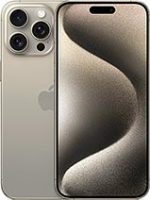
|
